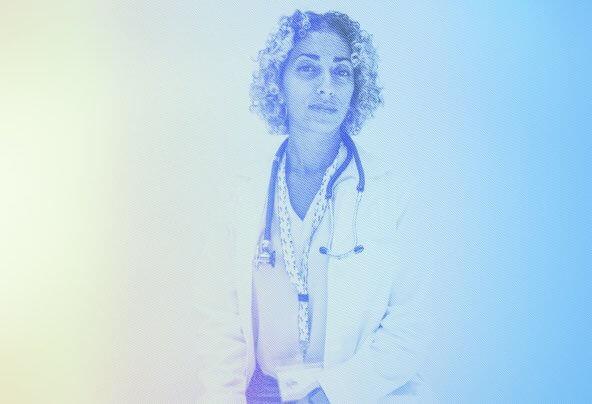
ADHD TREATMENTS
What ADHD treatments are right for my child?
ADHD treatment is considered “multimodal” and should be tailored to your child’s needs and circumstances.
THERAPY AND SUPPORT
Behavioral treatment and school accommodations.
The initial treatment for ADHD is often focused on behavioral and school support.

Behavioral therapy for children and parents
- Counseling
- Parent training
School accommodations
Individualized education plans (IEPs)
Tutoring and/or special education programs
1,2,3 MANAGEMENT
Is your child’s current treatment plan really managing all of his or her symptoms?
Learn about the “1, 2, 3” of effective ADHD medication management:
1
Medication is key to helping reduce consequences of ADHD
2
Coverage should be round-the-clock and not just during school hours
3
Treatment should balance efficacy and tolerability
Learn more about the importance of “1,2,3”: There Is No Recess From ADHD Symptoms
Watch Dr. Jain explain the many benefits of effectively treating ADHD.
[Dr. Jain]
Hello, my name is Rakesh Jain and I’m an adult, child, and adolescent psychiatrist and a proud member of TEAM ADHD. Today I would like to discuss with you the serious consequences of ADHD and how the symptoms of ADHD can result in reducing a child’s ability to function not just during school hours but also throughout the entire day. Even more importantly, I want you to know that getting the right treatment for ADHD can substantially reduce impairment in functioning and improve the quality of life of the individual with ADHD, as well as for their family and loved ones.
The core symptoms of ADHD are inattention, hyperactivity, and impulsivity. These core symptoms translate into behavioral issues that often impair normal daily functioning at home, at work, and at school. For example, the symptoms of inattention often result in carelessness, failure to complete activities, and being easily distracted and forgetful. Hyperactivity and impulsivity symptoms often result in difficulty remaining seated in the classroom, blurting out answers, and interrupting conversations. Because the initial diagnosis is most often made in school-age children, the impairments caused by these symptoms first appear in school, for example, as lower grades, disruptive behavior in class, and disciplinary problems. However, there often are significant impairments occurring after school at home and, in case of older adolescents with ADHD, at work as well.
A child's normal daily routine and activities do not just include the hours he or she spends in school. Rather, the activities of normal daily living extend from getting ready for school in the morning, to getting ready for bed in the evening, and sleeping during the night. Of note, most of the activities on the slide also occur after school, in social settings with peers, at home, on weekends and in the summer, in addition to during the school week.
The consequences of ADHD symptoms during the school day are well-known and well-documented. But, getting ready for school is also problematic for children and adolescents with ADHD. ADHD symptoms and their related negative behavioral consequences that are often seen during the early morning routine include poor time awareness, procrastination, impulsiveness, not following directions, misplacing items, arguing, and problems getting to school.
ADHD symptoms and their related negative behavioral consequences are also often seen during the late afternoon and evenings. Issues that can arise at home after the school day include problems with homework, procrastination with chores, arguing, difficulty sitting through dinner, problems with bedtime, and difficulty falling asleep.
The consequences of inadequately treated ADHD symptoms can be serious and pervasive in adolescence, when children typically begin to gain more independence, start driving, and make the difficult transition into adulthood. School-related consequences can include repeating a grade, being suspended, being expelled, and not completing high school. Other consequences may include a high risk for substance abuse, teen pregnancy, and sexually transmitted diseases, which may stem from ADHD-related impulsivity. Also, individuals with ADHD have a higher rate of attempted suicide, possibly related to depression that is sometimes a consequence of feelings of frustration that can accompany ADHD.
The good news is, treating ADHD with FDA approved prescription medication not only helps alleviate the symptoms of ADHD, like inattention and hyperactivity-impulsivity, but also reduces the serious consequences of these symptoms. Studies have shown that treating ADHD can improve academic performance and quality of life. In addition, people with ADHD who received treatment showed decreased risk of injuries, emergency room visits, motor vehicle accidents, and being convicted of a crime, compared to individuals with ADHD not receiving effective treatment. Aggressive behavior, anger, and emotional ups and down decrease, as well.
As we have discussed, when not treated appropriately, the impact of ADHD symptoms on an individual’s life can be serious and life-altering. Symptoms and negative consequences of ADHD can occur around the clock. Therefore, an effective ADHD medication treatment plan should also treat ADHD symptoms throughout the day.
As we have seen, treating ADHD with medication improves not only academic performance but other areas of functioning, as well. Getting the most benefit from ADHD treatment requires careful planning and management to ensure that treatment benefits are optimized. When deciding on your choice of treatment, remember the one, two, three of effective of ADHD management. One, medication is key to helping reduce the serious consequences of ADHD and because these consequences can occur throughout the day and in the evening. Two, medication treatment coverage should be around the clock. And, three, because the benefits of ADHD medication are only realized if taken consistently, medication treatment should balance efficacy with tolerability. ADHD can be serious, but there are many effective medications available to help reduce its negative impact on a child or adolescent’s life. Remember, the right ADHD treatment plan and choice of medication can make a life-altering difference in the lives of patients with ADHD.
So, to sum up, effective treatment can improve executive functioning, academic performance, and family life, and reduce the risk of criminality, substance use, injury and car crashes. Effective medication treatment can also help reduce the problems getting ready for school in the morning or improve family life in the evenings after school, and, just overall help improve quality of life. It is important to understand that there is no “one size fits all” ADHD medication treatment plan. There are so many benefits to effectively treating ADHD. Don't be afraid to be an advocate when it comes to ADHD treatment and be sure to keep your healthcare provider informed of all facets of your child's life, how you child is feeling including symptoms and side effects associated with medication use.
With that, I thank you very much for your attention and on behalf of TEAM ADHD, I appreciate you being part of this educational initiative.
MEDICATION OPTIONS IN ADHD
Behavioral and educational approaches alone may not be enough to manage your child’s ADHD.
Medications may play an important role and are used to treat core symptoms of ADHD, including inattention, hyperactivity, and impulsivity.
There are 2 main categories of ADHD medications:
- Controlled medications/stimulants
- Noncontrolled medications/nonstimulants

Controlled medications/stimulants:
Contain the molecules methylphenidate or amphetamine.
- Oldest/most commonly prescribed class of medication in ADHD
- Works on the central nervous system to improve attention and reduce hyperactivity
- Fast acting, but symptoms may “rebound” (occur again) in the late afternoon or evening
- Common side effects are loss of appetite, weight loss, and difficulty sleeping
- Less common, though more serious, side effects are anxiety, heart complications, psychosis, and worsening of tics (involuntary actions)

Noncontrolled medications/nonstimulants:
Include certain classes of medications also used in other settings to lower blood pressure or adjust the chemicals in the brain (antidepressants).
- Can take 2-12 weeks to be fully effective
- Often less effective than stimulants, though can help reduce hyperactivity and impulsivity
- Not a controlled substance
- Reduced risk of potential abuse compared to stimulants
- Common side effects include mood changes and fatigue
- Less common, but more serious, side effects include dizziness or drop in blood pressure
- In rare cases, can cause liver problems
Combination therapy
When a child responds only partially to one treatment, their doctor may try combining both categories.


